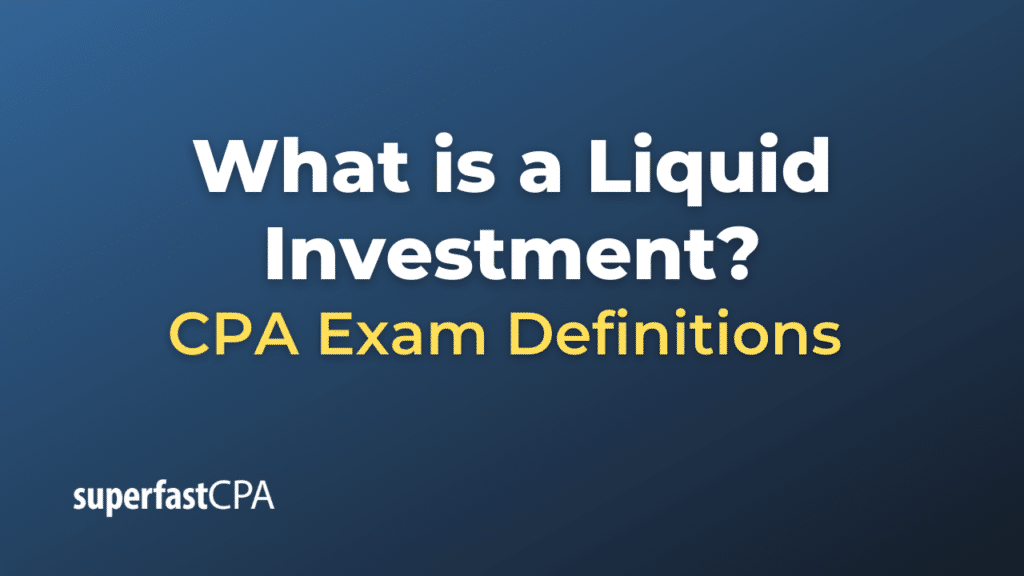Liquid Investment
A liquid investment refers to an investment that can be easily and quickly converted into cash without significantly affecting its market price. The liquidity of an investment is determined by the ability to buy or sell it without causing a drastic change in its price and the time it takes to convert it into cash.
Examples of liquid investments include:
- Stocks: Stocks traded on major exchanges are typically highly liquid because they can be bought and sold on the open market with relative ease. However, the liquidity can depend on the company and market conditions.
- Bonds: Government and corporate bonds that are actively traded can usually be sold fairly quickly, though the liquidity can vary depending on the specific bond and the overall condition of the bond market.
- Exchange-Traded Funds (ETFs): ETFs are investment funds traded on stock exchanges. They can typically be bought and sold throughout the trading day at market prices, making them a liquid investment.
- Money Market Funds: These are mutual funds that invest in short-term, high-quality debt securities and can generally be converted into cash very quickly.
- mutual funds: While mutual funds are not traded on an exchange and are only bought and sold at the end of the trading day at the net asset value (NAV), they are generally considered liquid because they can be sold on any business day.
On the other hand, investments like real estate, art, and collectibles are generally considered less liquid because they can take a significant amount of time to sell and the selling price can be uncertain or subject to negotiation. Additionally, investments in private companies (like startups or private equity investments) are usually illiquid because they can’t be sold on an open market.
Example of a Liquid Investment
Let’s consider an example to illustrate the concept of a liquid investment.
Imagine that Alex has a diversified investment portfolio that includes the following:
- $50,000 invested in a variety of stocks listed on the New York Stock Exchange.
- $30,000 in U.S. Treasury bonds.
- $20,000 in a money market fund.
- $100,000 in real estate properties.
The stocks, bonds, and money market fund that Alex owns are considered liquid investments. If Alex needed to access cash quickly, he could sell his stocks or bonds on the open market relatively easily and receive the cash within a few days. Similarly, he could withdraw money from the money market fund fairly quickly.
However, the real estate properties are considered less liquid. If Alex needed to sell a property, it would likely take much longer than selling stocks or bonds, as he would need to find a buyer, negotiate the sale price, and complete the necessary paperwork. Additionally, transaction costs (like realtor fees or closing costs) could reduce the amount of cash he would receive from the sale.
In this case, Alex has $100,000 in liquid investments (stocks, bonds, and money market fund) and $100,000 in less liquid investments (real estate properties). This distribution may or may not be appropriate depending on Alex’s specific financial situation and needs.













